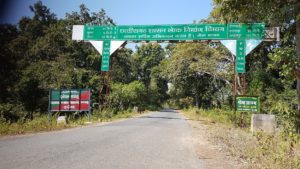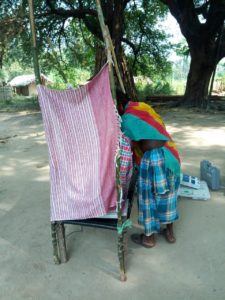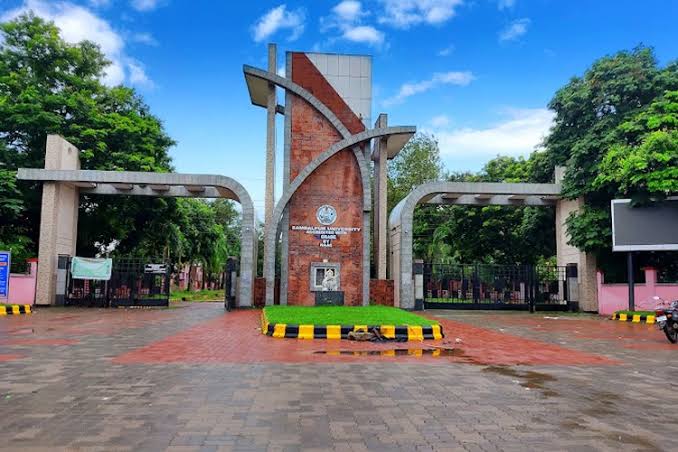
By-MK Singh
Malkangiri/Sukma: The recent killing of a Maoist by civilians in a remote village of Malkangiri district of Odisha speaks largely about the loosing grip of the Reds and their domination in the jungles of Odisha.
Once known as the hotbeds of the Red Corridor of India, Naxals are Malkangiri as well as in the Sukma district of Chattisgarh are seen losing their grounds. At the same time, the extremists are working in revamping their offensive strategies.
Ravi Kumar is an automobile store owner living in the Malkangiri town of Odisha. He has witnessed several decades of Naxal influence in his district, considered as part of India’s Red Corridor. Turning newspaper pages in the morning with his friends with a cup of tea at a local tea stall and discussing their local news is his habit.

However, from the last few years he has seen his district transforming from a poorly connected district to better connected one and hearing lesser news of Naxal attacks in his area. “There has been a paradigm shift in the district which had been earlier considered as the hotbed for Naxals in Odisha. Now we have lesser Naxal violence cases reported in local newspapers and the district which was poorly connected has also been slowly getting connected through different modes of transportation,” he said.
The Malkangiri district, lying in the southernmost part of the state which shares the state boundaries with Sukma (Chhattisgarh), Telangana and Andhra Pradesh is among the worst 35 most affected districts of Indian from the Left Wing Extremists (LWEs) according to the own admission of the Union Home Ministry.
This district, which lies just 30 kms away from Sukma (one of the bastions of the Naxals in India) is however still deprived of the railway network as even after seven decades of Independence railways have failed to reach this Naxal infested district. The connecting highway to Malkangiri which had been worked out for decades and often under the eyes of the Naxals is now near to its completion. Such lack of railway network, road and telecom connectivity and proximity of Andhra and Chattisgarh borders seemed to have bolstered the propagation of Reds in the district earlier in the past.

The Naxal dominance in Odisha and its nearby border areas like Sukma in Chhattisgarh are however seemed to have dwindled in the recent few years. A recent reply furnished in the Indian Parliament by the Home Ministry reveals that there had been a dip in the magnitude of Naxal attacks in both Odisha and Chhatisgarh in the last three years while the Indian government is assisting their security forces with more modernized arms and assistance to Naxal-infested areas with special funds.
Several researchers and security experts also claim that with the arrests of their top leaders and lack of local leaderships the whole movement of the Reds in both Odisha and Chhattisgarh are declining. In the light of their lesser domination in the interiors and forests, the irked Naxals are now seemed to be on a spree to change their war tactics to counter the security forces.
Security forces who are involved in the combat operations, intelligence agencies and researches that are well versed with the Naxals and their strategies now claim that the Reds are now trying to chip in new tactics to baffle the security forces, cause more causality and prove their might in the jungles. However with little case of local attacks, they have failed to mark their presence felt.
NEW TACTICS
The latest among the new tactics being used by them is the induction of more number of women and use them in combat as well as intelligence, using effigies to confuse the security forces besides using more technological advanced weapons and arms like ‘pressure IEDs’ and ‘spiked pits’.
“From the last few months we have seen the Naxals shunning inclusion of more manpower for their offensive. Earlier they used triggered-IEDs to target only their enemies which needed a tracking by a human but now they have started using pressure IEDs which can explode automatically once anybody steps onto it. Similarly now Naxals are also using spiked pits to ensure maximum casualty,” said Jagmohan Meena, former Superintendent of Police (SP), Malkangiri.

Meena said that due to such more automatic mode of attacks more cattle and civilians are facing the wrath and are getting killed rather than their real targets which are security forces.
In the Sukma district of Chhattisgarh which is considered as bastion for the Naxals due to dense forests and easy escape routes to other states is meanwhile struggling with the new tactics of the Naxals to use effigies and fake guns in jungle. In the past few months such cases have come forth which helps the Reds to delay the operations of the security forces in forests and also exposes the position of the security forces if they retaliate to the fake Naxal prototypes.
Police claims that the fake effigies are made up of straw, mud and with colourful clothes wrapped around them while wooden fake guns resembling as real guns are made to confuse the security personnel roaming around in jungles of the Naxal-affected areas of Sukma district.
Former Sukma SP Abhishek Meena told me that another change in the overall scenario is that now they have also been witnessing a “trust deficit” among the villagers and the Naxals. “Earlier Naxals used to trust the villagers in their local area and had some confidence on them but it is now losing it seems. Earlier they used to warn villagers about the location of planted IEDs but now they are not revealing it to them and the result is more civilian causalities in areas close to villages.”
MORE WOMEN INTO MOVEMENT
With the whole Left Wing Naxal movement in the country and in the hotbeds of their territory loosing shine and with the arrests of their top leaders and area commanders there had also been attempts to induct villagers into the movement and one way of doing is according to the Red seems to include more women into the group.
“From the sociological point of view, Reds are now recruiting more women into their groups which ensure that more families join the movement. Take the surrender cases for example-most of those who are surrendering are women,” said Vijaynee Mishra, a scholar doing her PhD on the post life of surrendered Naxals and has interviewed more than dozens of surrendered Naxals in Odisha and other areas in the last one year.

She said that many of these women who are totally unaware of the ideology are persuaded on the issue of ‘jal, jameen and jungle’ (water, land and forest) are taken on board and treated at par with men as per the admissions of the surrendered Naxals. She added that most of the Naxal women unlike women in the mainstream are well versed with using riffles, AK-47 and other assault weapons and openly take part in combat operations.
LOCAL UNITS TO COMBAT REDS
The security experts meanwhile claim that it was the envisaging of local special teams especially crafted to deal with Naxal issues which helped to reduce the domination of Naxals in the jungles and weakened their violent movement.
Bipin Bihari Mishra is a retired Director General of Police (DGP) of Odisha and a former bureaucrat in the Home Ministry (India’s internal security nodal body). He had also served as the Special Secretary in the Home Ministry during 2003 when Odisha was tackling the offensive from the Naxals without any special team and thus lacked any focused attention.
“No government in Odisha till 2003 ever thought of any special team to combat Naxals. When I was in Home Ministry I visited Andhra Pradesh and was quite impressed with the ‘Greyhound’ which is a special force to combat only Naxals. The ministry letter recommended having special Naxal combat units in Odisha,” he said.
Mishra told this correspondent that during mid 2000, the Odisha government came up with two special Naxal tacking wings-Special Operations Group–SOG (for combat operations) and Special Intelligence Wing–SIG (for intelligence works) and the resultant were overwhelming.
“With the special groups with focused attention and with the tough stand of the Union government against Naxals the security forces started gaining ground in Odisha where Naxals used to rule. The result was that now in many vulnerable areas Naxals have fled while only few pockets like Malkangiri and Koraput are under radar in Odisha,” Mishra said.
Replies given in the Lok Sabha also revealed that earlier before 2017, 19 districts from Odisha, vulnerable to LWE threats were getting grants from Centre while now only 15 district remain for grants under the name of Security Related Expenditures as many districts have now reported hardly any incidents of Naxal attacks.

On other hand, in Sukma which is reported to host the maximum Naxals from the country also envisaged a local team to counter the Naxals and defeat them in their intelligence and offensive. They are known for their Guerrilla warfare tactics, used for decades. Home Ministry statistics claim that in Chhatisgarh earlier before 2017, there were 16 Naxal districts getting grants now it has been confined to 14.
Sukma SP Abhishek Meena said, “We ended our full dependency on the CRPF and groomed the local force. We groomed our District Reserve Guards (DRG), which comprised local surrendered Naxals, local constables. More than 80 per cent against Naxals with 90 per cent efficiency rates are done by these DRGs, who have expertise in localised internal security threats.”
He also added, “They are well versed with the language, the people, know many villagers from interior areas, know the terrain, able to walk more than 40kms per day without getting tired. They know the tactics of the Naxals and are smart enough to foil their strategies.”
(MK Singh is a journalist based in Bhubabneswar, Odisha)






